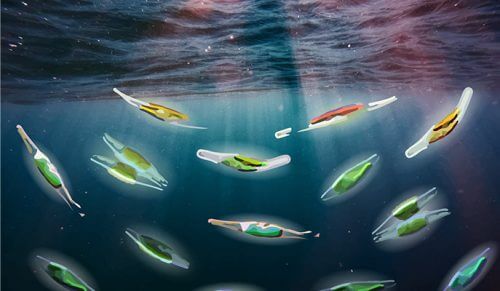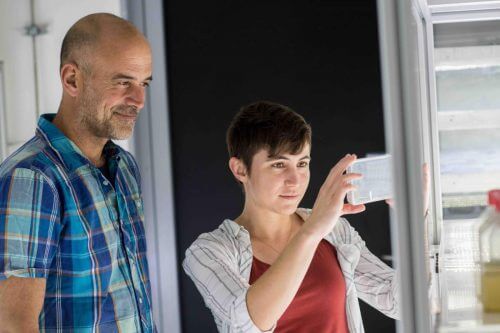Weizmann Institute scientists have shown that algal cells react in different ways to identical stress situations, thus "distributing risks" and ensuring the survival of a part of the population and the continuity of the entire species

The changes going through unicellular algae in the ocean are among the most dramatic on Earth - huge blooms covering many kilometers collapse within weeks without leaving a trace. When they bloom, these algae, called phytoplankton, provide about 50% of our world's oxygen, have a decisive effect on the carbon cycle in the ocean and are the basis of the entire marine food chain. However, as great as their importance is, so is the greatness of the "dangers" lurking at their door - from lack of food, through various predators to bacteria and viruses. When the blooms collapse, as a result of these dangers, most algae cells die, but a few manage to survive and form new blooms.
"This collective pattern of huge blooms that quickly disappear is the result of countless individual decisions of trillions of individual cells," says Prof. Assaf Vardi, from the Department of Plant and Environmental Sciences at the Weizmann Institute of Science. "In my lab, our challenge is to understand how decisions made at the level of the individual cell, over time, affect processes that occur at the global level." In order to understand why certain cells die, while others survive, Prof. Verdi's group developed new experimental methods that allow live cells to be observed under a microscope for 24 hours, and to expose them to a controlled environment into which various stressors were introduced.

in the present experiment The researchers, led by Abia Mizrahi, chose to examine a species of algae called P. tricornutum, which belongs to the class of diatoms, since there is already a genetic toolkit that allows studying the unique adaptation of this species to stress conditions. The researchers focused on quantifying active oxygen compounds (ROS) - free radicals that may help the cell to adapt and survive, but in high concentrations may lead to its death. When the researchers exposed the cells to moderate levels of oxygen compounds, the population split into two groups: sensitive cells, which in response to the exposure went on a path of cell death, and cells that were resistant and managed to survive. The source of the variation was not genetic differences, since the two different responses to exposure were expressed even in genetically identical cells.
To understand the source of the differences in reactions, the researchers turned to a central focus of the production of oxygen compounds in algae: organelles called chloroplasts that produce oxygen compounds as a byproduct of photosynthesis. The researchers hypothesized that the chloroplasts serve not only as energy suppliers for acceleration cells, but also participate in the decision-making mechanisms in the cell. They injected into chloroplasts and other cell organelles a reporter gene that glows in phosphorescent colors depending on the concentration of oxygen compounds, and exposed the algae to the stressful conditions prevailing in the sea surface area - an area known to spur increased production of free radicals.
The researchers discovered that under strong light conditions, some algae cells accumulated oxygen compounds in the chloroplasts and died, while other cells managed to survive; However, under dark conditions, the cells all became sensitized and died - even when exposed to low levels of the compounds. That is, the different responses and the chances of survival depended on the light to which the cells were exposed. "Algae need sunlight to survive, but too much of it can harm them. On the other hand, without light, the algae become very sensitive to other stress conditions. It is possible that cells floating in slightly deeper water - and therefore exposed to weaker light - may have a better chance of survival. Their growth rate will be slower, but so will the production rate of oxygen compounds in chloroplasts," Mizrahi explains.
Researchers continue to investigate which factors allow a cell to survive (or alternatively dictate its death), and which genetic programs mediate these decisions in each cell. Apparently, exposure to light is one such factor; Other factors may include the cell's metabolism, its history, external signals, or other environmental aspects. "Different interpretations of the same messages developed, apparently, as a way to 'disperse risks,'" explain Mizrahi and Prof. Verdi. "In this way, in every scenario at least a small percentage of cells will survive, and the 'survival of the few' will allow the entire species to continue to exist."
In the video: oxidation processes in acceleration cells following the exposure to active oxygen compounds. These reactions allowed scientists to know 24 hours in advance which cells would die and which would survive
Photosynthetic organisms in the ocean fix 50-40 gigatons of carbon per year - about 50% of all carbon fixation on Earth.

2 תגובות
A very interesting article about survival
It is very worthwhile to find a way to strengthen them in stressful situations. It is very possible that this is the most available survival strategy in the near future for the human race.